Bengaluru: Nearly every night, a group of 30-40 students from the Vellore Institute of Technology exit their classrooms and head to the Creation Labs building on campus. By 9 pm, they are building satellites and rockets. They wrap up at 1 am, grab a few hours of rest, and are back in lectures by 9 am. It’s more than just a hobby—it’s a shot at global engineering glory.
These undergraduates are Team Sammard, VIT’s rocket club. They’ve gone head-to-head with some of the world’s best student engineering teams—including those from Ivy League universities like Yale and Princeton. Since 2017, the team has specialised in building soda-can-sized satellites, known as CanSats, and the sounding rockets that carry them to sub-orbital heights. They’ve even cracked the top 10 at the prestigious CanSat competition—a NASA-backed challenge for student engineers.
And they’re doing it all without an aerospace department.
Instead, students from various departments—mechanical engineering to computer science—pool their technical skills to build and test their rockets entirely in-house. Team Sammard first officially entered the 2018 CanSat competition, getting placed 18th. In 2022, they won the 7th place.
“We design and develop everything in-house—our strength is that our products are on par with those available commercially,” said Shyam Rajendran, a third-year mechanical engineering student and Team Sammard’s head of electronics.
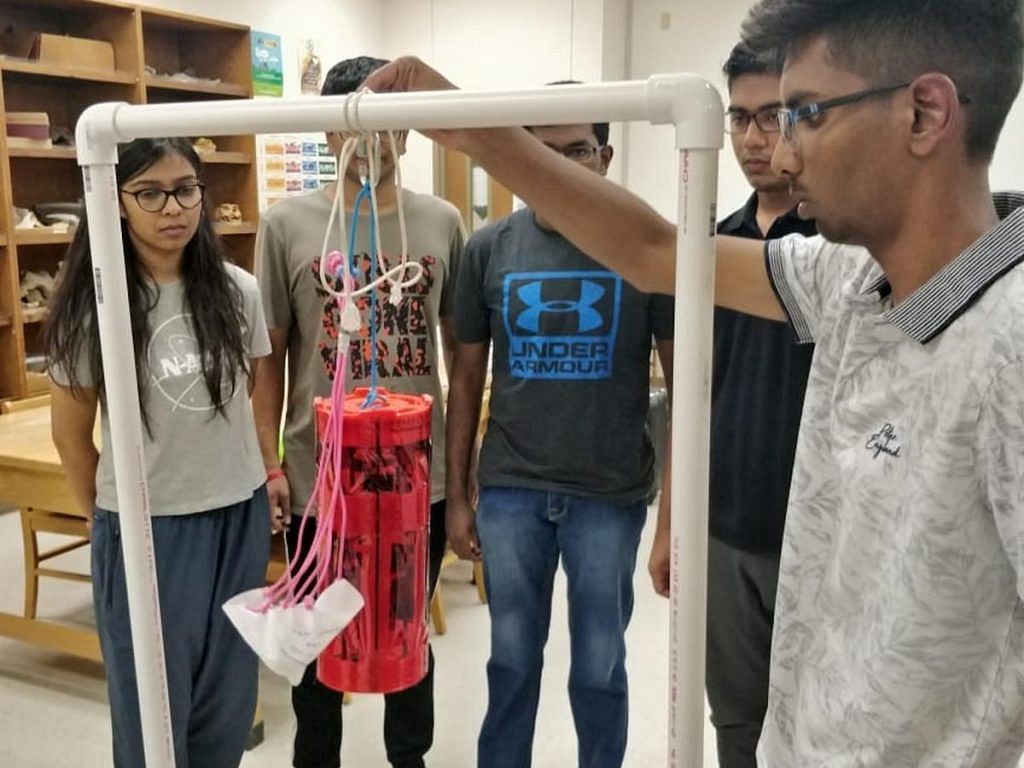
Competitions provide the team with a sense of direction, and from there, it’s all about solving the challenges.
“These competitions have guidelines that tell us how to build our project. Then we research, design, develop, and test our projects in line with these,” Rajendran added.
So far, the team has focused its efforts on three contests—the American Astronautical Society’s CanSat competition, the Spaceport America (SA) Cup, and—this year on— the 2024-25 Indian CanSat competition, organised by the Astronautical Society of India in association with ISRO and IN-SPACe.
Most teams that participate in the SA Cup launch their rockets up to 10,000 feet, where they perform specific tasks, gather data, or test technology. To reach these sub-orbital heights, Team Sammard builds their own rockets.
In the last three years, they’ve unveiled and launched three rockets as part of the SA Cup competition—2022’s Pinaka, 2023’s Vajra, and this year’s Agneya. Standing 6 to 8 feet tall, these slim, pencil-like rockets are engineered to carry payloads housing delicate instruments.
One of our biggest strengths is that we’ve never had to do a full flight test, unlike other teams in competitions. We test all our components individually and just fly the rocket on the day, and it has never failed
-Mukul Sharma, Team Sammard member
CanSats typically fly within the Earth’s atmosphere, well below the altitudes reached even by commercial planes. While primarily educational, some CanSat projects include real engineering objectives. For instance, some projects task students with simulating controlled landings. This can involve designing satellites capable of dropping back to the surface with parachutes while carrying fragile payloads.
“Last year, our problem statement was an egg casing (over the payload), which had to hard land back to the ground, and the egg had to remain undamaged,” said avionics engineer Mukul Sharma, who is doing his BTech in mechanical engineering.
While the team did not make it through to the next round, winning isn’t the only purpose. “These challenges are quite interesting and fun, and we learn quite a bit from them,” said Sharma.
Now, the team is going a step further, and exploring hybrid propellants too.
“We are now beginning to move to bigger motors for our rockets, so we’re moving beyond basic solid propellant and experimenting with new hybrid ones,” Sharma added.
Competing against rivals from India’s top engineering institutions, including IITs, Sammard has established itself as one of the top three SA Cup teams in India.
Also Read: Delhi Amity School students wrote $36bn space dream. NASA took note, gave them a grand prize
From labs to liftoff
When lights go out elsewhere on campus, Team Sammard’s hums with activity. While some members design and print large 3D prototypes of their satellites and components, others code software to power their missions or manufacture custom circuit boards. They even handle their own marketing and fundraising. Members range from first to third-year students, with fourth years mandatorily leaving the team to focus on graduation.
Students join the project team to work purely out of passion. There are no stipends for their work, and the focus is entirely on innovation and winning competitions. They also try to attract likeminded future members.
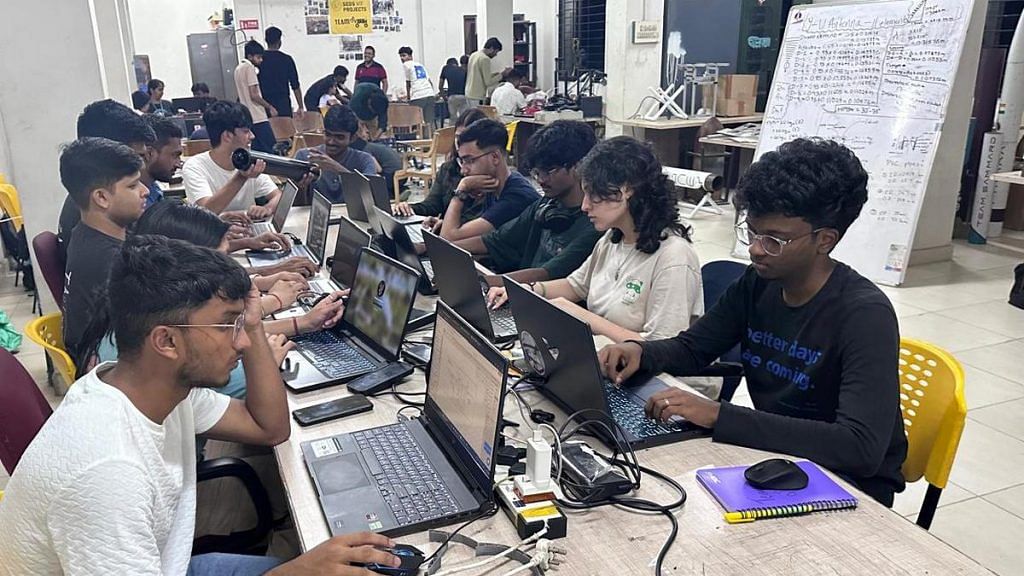
“We do outreach programmes where we showcase our projects to students in Vellore government schools,” said Jermy K Varkey, head of operations and a third-year electronics and communications student. “We also promote rocketry in the student community, and hold workshops in other colleges and cities.”
Today, the 37-member team is organised into specialised ‘departments’—mechanical engineering, computer science, electronics, operations, management (marketing), SA Cup, CanSat, and R&D. At the centre of it all is the captain, holding the team together.
Right now, the man in charge is Prithvi Raj Singh, a member of the team for over a year and a third-year BTech student in electronics and communication engineering.
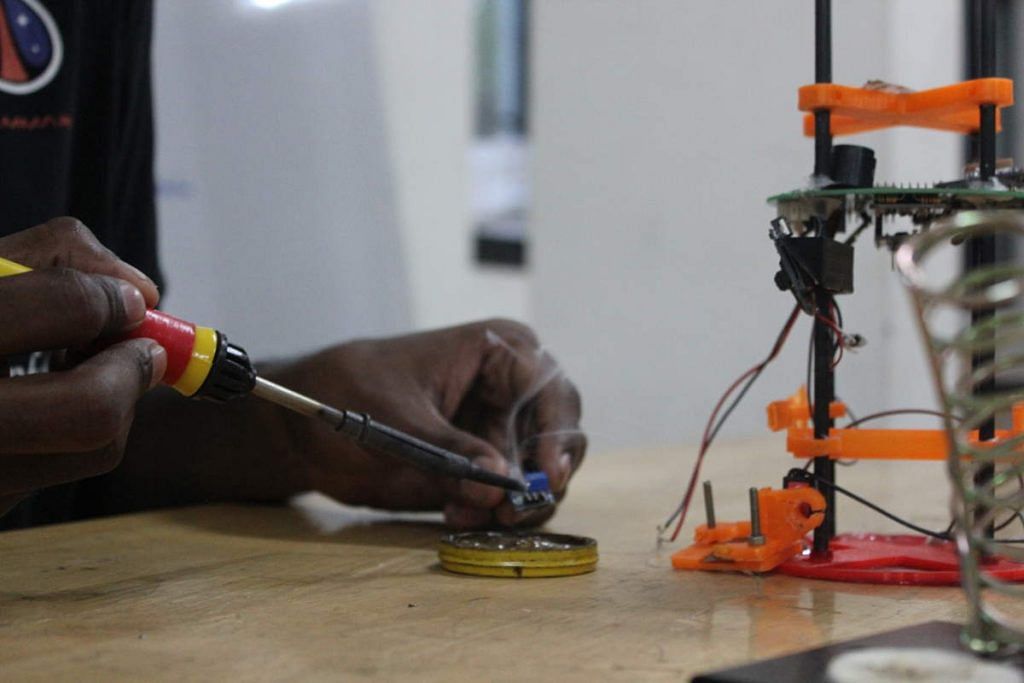
“As a captain, my responsibilities include making sure we perform in the competition. Additionally, we also train juniors and coach them about taking responsibility, to prepare for when we leave because our last year is busy with placements and master’s admissions,” said Singh.
Each ‘department’ has students working in their own disciplines for tasks such as 3D-printing prototypes, building rocket casings out of glass fibre and epoxy, and coding software systems. They test all components rigorously in the institute’s labs before assembling them.
We prepare a 250-page document with diagrams and math and we get eight minutes to present it to a panel with folks from NASA Goddard, Lockheed Martin, US Naval Association, and so on
-Kartik Vijayakumar, Team Sammard founder-member
When the rockets and their palm-sized satellites take flight, it’s all systems go. Students track second-by-second data from the ground, much like a professional space launch. Students code their own software for tracking all aspects of their flight and mission.
“In the computer science department, we develop the ground station, which is responsible for telemetry,” said third-year computer science student Joanna Suzan Biju, who heads the CanSat team. “The flight computer software that we build goes inside the rocket and is responsible for collecting data like pressure, altitude, and temperature.”
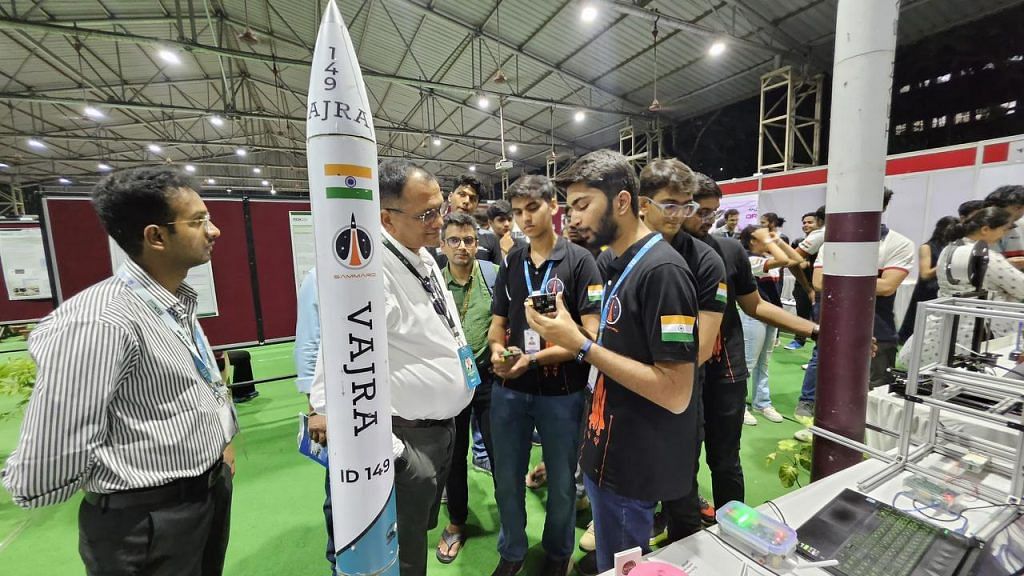
The ground station’s screen looks straight out of a sci-fi film, with colourful indicators of rocket and payload performance. Team members say Sammard’s impressive track record comes from its methodical approach.
“One of our biggest strengths is that we’ve never had to do a full flight test, unlike other teams in competitions,” said Sharma. “We test all our components individually and just fly the rocket on the day, and it has never failed.”
Sammard’s impact goes beyond competition wins—it also seems to be a launchpad for future achievements. Alumni are now working around the world at companies developing self-driving cars, food delivery drones, high-speed rail, and supersonic jets.
Turning a loss into a win
It all started with a wild idea in 2017—a group of VIT students, armed with little more than ambition, decided to take on the prestigious CanSat competition. With just weeks left before the deadline, they rushed to put together a submission. They missed making it past the first round by a whisker, but it wasn’t the end of the road. It was the beginning of something bigger.
“We saw the problem statement just about a month or so before the deadline. At that point, we were all bright-eyed second years at the university, and everything felt possible. So, we decided to go ahead with it,” reminisced founding member Shashank Amin, currently a mechanical engineer in the Netherlands.
We had families and friends contributing to our project because just a single rocket takes around Rs 1.5 lakhs to manufacture, and we as students don’t have that kind of money
-Anirudh Kanthamraju, Team Sammard founder member
The team set up base in the university’s Creation Labs—which provides infrastructural support for engineering projects—and started a tradition.
The CanSat competition, held annually in the US, challenges student teams to solve complex engineering problems outlined in a yearly problem statement. Whether it’s ensuring precise landings, testing mid-flight performance, or developing durable designs, teams have nine to ten months to research, design, and build their solutions. The competition is divided into various steps: an initial document-heavy technical presentation, a critical design report just before launch, and finally, launching and demonstrating the satellite’s capabilities.
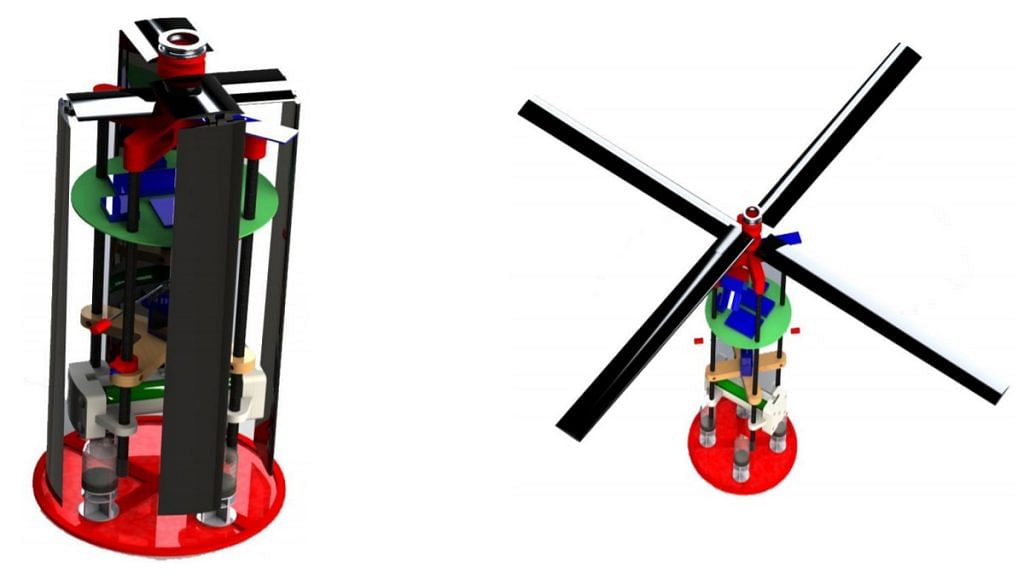
The top 40 teams are picked for the next round in Texas, but in their first attempt under the name VITSAT, the Vellore team fell just short, placing 41st.
Despite this miss, the team persevered. Founding members Shashank Amin, Anirudh Kanthamraju, Kartik Vijayakumar, Arunava Basu, and Rajarshi Bhattacharya started by rebranding their club.
“We wanted the team to grow and identify beyond just the satellite competition, so we came up with Sammard, which means friction or impact (in Sanskrit),” explained Bhattacharya, who came up with the name.
Then, the team—comprising five mechanical, computer science, and electronics engineers— designed a logo using PowerPoint and set about recruiting a new batch of freshers, many deftly poached from other student clubs building rovers, self-driving cars, and drones.
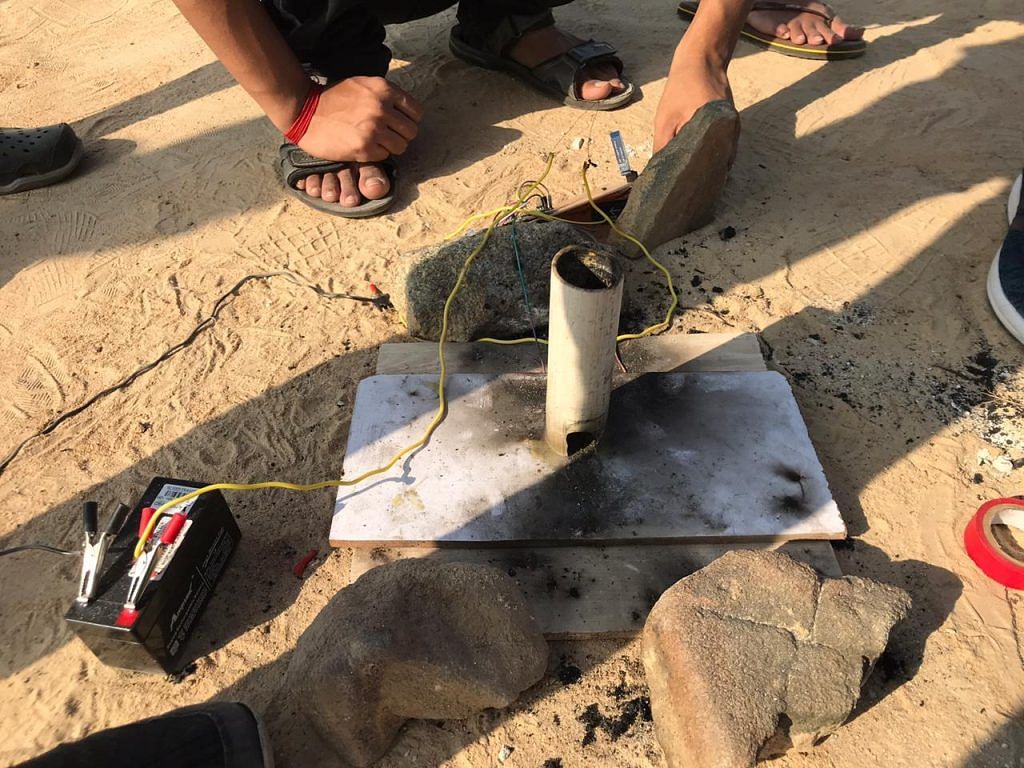
The competition cycle
Starting with their first official entry in 2018, Team Sammard has competed regularly at the CanSat competition. And since 2022, they’ve added the Spaceport America Cup to their competition roster.
Each year follows a structured cycle: new students are recruited from the incoming batch and then, when the problem statement is released, the team begins tackling it in stages.
The first screening step is daunting—a detailed technical report, which must be presented to the competition’s panel of aerospace experts.
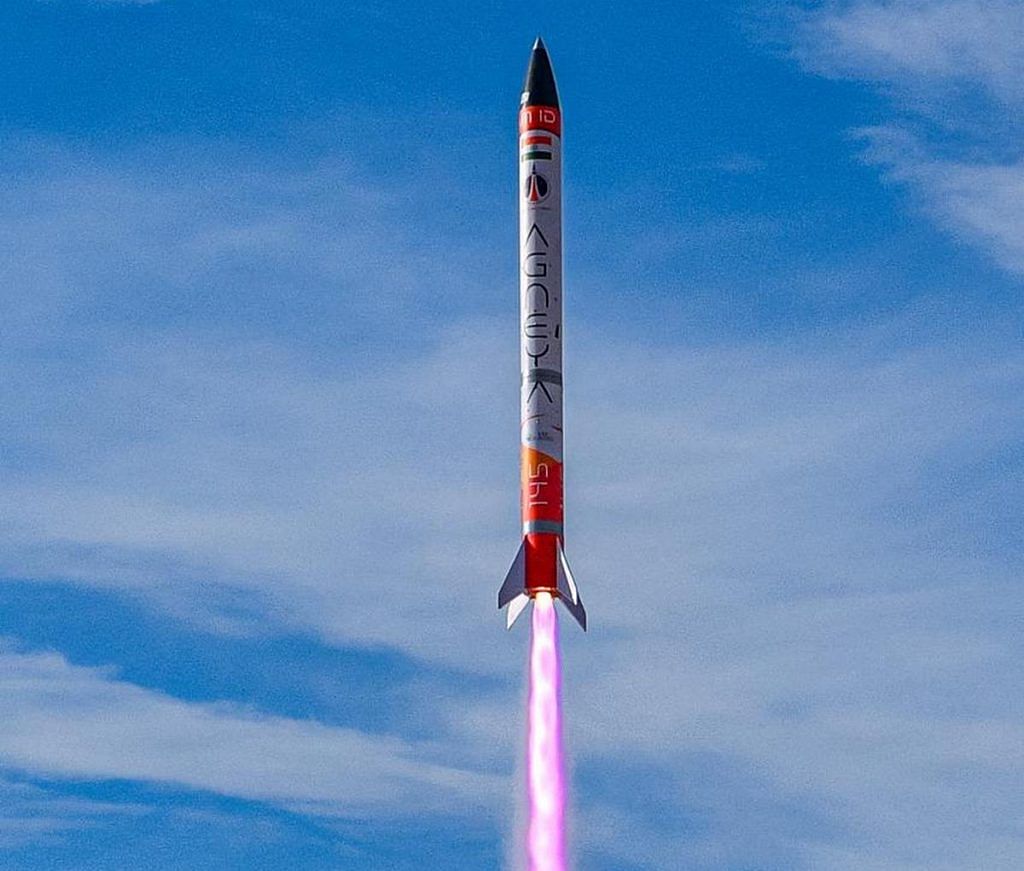
“We prepare a 250-page document with diagrams and math and we get eight minutes to present it to a panel with folks from NASA Goddard, Lockheed Martin, US Naval Association, and so on,” said Vijayakumar. The evaluating panel also includes representatives from organisations that fund the CanSat competition, such as Siemens, Praxis, Kratos, and Valley Aerospace Team.
Teams that clear the technical presentations move on to build and launch their CanSats, all while balancing their university classes and exams.
Over time, the team’s well-oiled workflow and steady influx of new talent have enabled them to widen their ambitions. This year, they’ve entered a third competition—the Indian CanSat competition, which is backed by ISRO.
Since 2018, the team has built a solid track record. They ranked 18th in CanSat 2018, 20th in 2019, 13th in 2021, followed by 7th place in 2022. The same year, their rockets earned them 23rd place at the SA Cup, where they launched two new models. Although they didn’t qualify this year, the team used the opportunity to conduct demos and have their sights set on upcoming competitions.
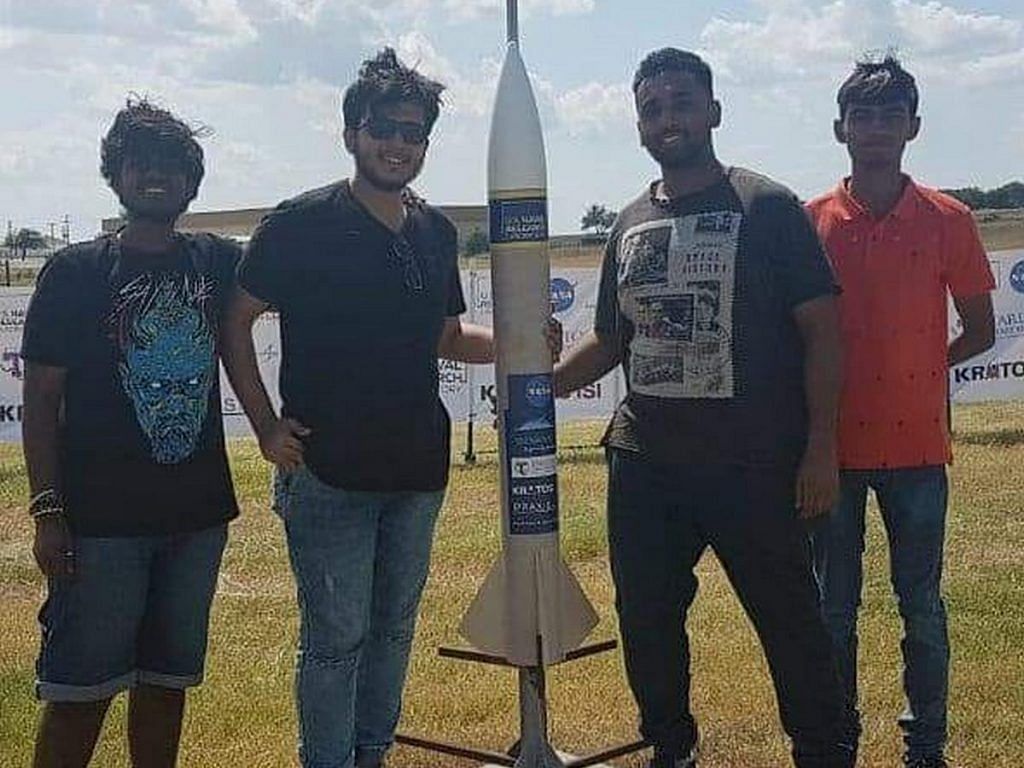
As third-year seniors prepare for their final competitions next year, their priorities are clear: inducting juniors to take over and improving performance.
The team is experimenting with hybrid fuel for future rockets while also working on enhancing rocket designs, increasing motor capacity, and continuing their ongoing efforts in fundraising.
Also Read: Ahmedabad lab is now predicting India’s climate future. It’s using ‘atomic time machines’
Launching careers
As Team Sammard ramps up its ambitions, meeting the rising costs of increasingly complex engineering projects is becoming a challenge.
The team typically cobbles together about Rs 8 lakh each year through a mix of university support and crowdfunding—with contributions coming from students, families, and the public—but it still sometimes falls short.
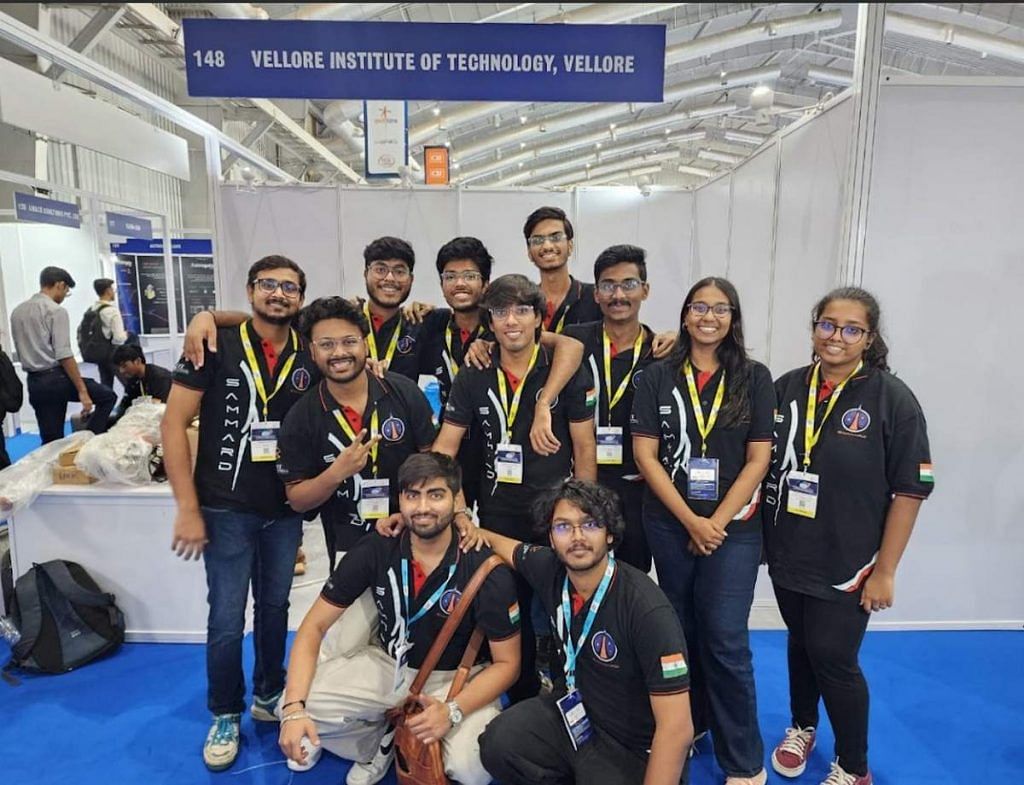
“We had families and friends contributing to our project because just a single rocket takes around Rs 1.5 lakhs to manufacture, and we as students don’t have that kind of money,” said Kanthamraju.
Helping the team navigate various hurdles is Professor Senthil Kumar M, the faculty coordinator. Right from its inception, he has served as both advisor and mediator between the team and the university, arranging access to facilities like the fabrication lab and supporting their technical needs.
“Students at this level sometimes need more technical support than administrative. As faculty coordinators, we facilitate this teamwork with other departments,” said Kumar, who also works with two other student engineering teams.
For the university, the stakes are rising too. Competing against rivals from India’s top engineering institutions, including IITs, Sammard has established itself as one of the top SA Cup teams in India, along with IIT Madras (Team Abhyuday) and Manipal Institute of Technology (ThrustMIT).
But Sammard’s impact goes beyond competition wins—it also seems to be a launchpad for future achievements. Alumni are now working around the world at companies developing self-driving cars, food delivery drones, high-speed rail, and supersonic jets.
“The engineering challenges we worked on during our competitions really helped with not just with our placements but also with our knowledge in our future jobs, as many of us continue in the technical field,” said founding member Basu.
(Edited by Asavari Singh)



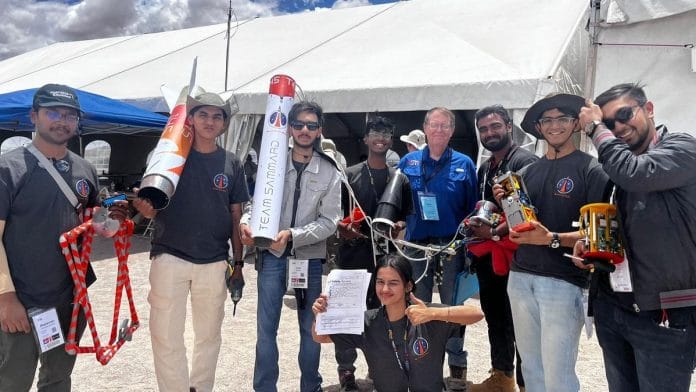



Great news! More power to brilliant students!